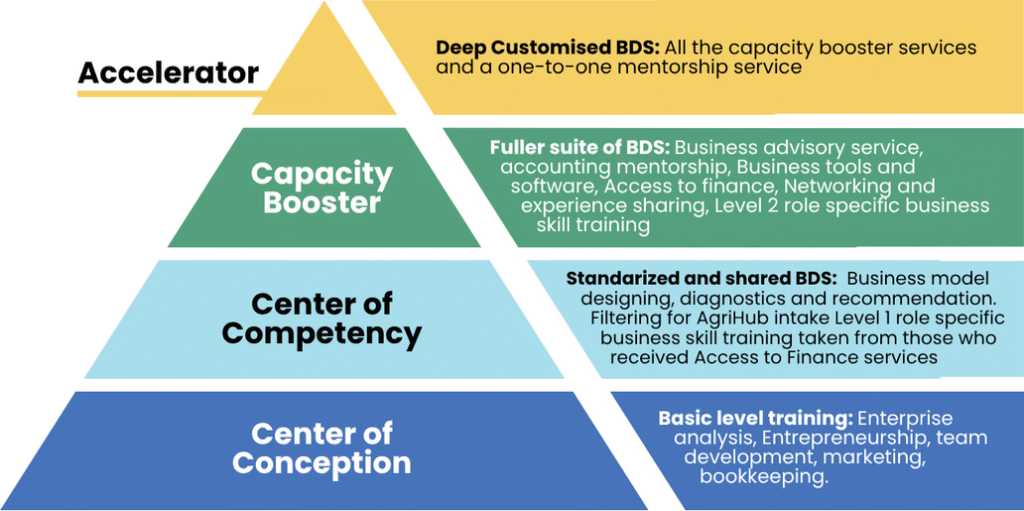Over three years, Ethiopia’s Agricultural Transformation Institute (ATI) achieved a breakthrough in business development services delivery—creating a tiered BDS model that generated exceptional returns while reaching over 1,200 agri-SMEs across four regions and twelve value chains. This transformation, captured in AMEA’s latest Learning into Action case study, demonstrates how strategic segmentation and diagnostic-led approaches can revolutionize SME support systems.
The ATI AgriHub program represents a compelling example of how structured, data-driven BDS can drive systemic change. Launched in 2021 with an €8 million grant from AFD, the program was aligned with Ethiopia’s Agricultural Commercialization Cluster (ACC) flagship program, delivering comprehensive support through three integrated components focusing on capacity building, access to finance, and sustainable economic models.
At the heart of this transformation was AgriHub’s innovative four-tier segmentation framework, which matched service intensity to SME development stage and needs. From the foundational “Center of Conception” providing basic entrepreneurship training to the advanced “Accelerator” tier offering deep customized mentorship, the program’s diagnostic-led approach enabled precise targeting of interventions.

The numbers tell a remarkable story: participating SMEs achieved a median return on investment of 18:1 when measured against revenue increases, and an extraordinary 84:1 ROI when calculated against capital mobilized. The 197 SMEs that accessed finance secured ETB 3.16 billion (~$63.8 million USD), while creating an average of 3 full-time equivalent jobs per enterprise.
As the AgriHub model expands into its next phase, the lessons from Ethiopia’s experience offer a powerful blueprint for development practitioners, government institutions, and private sector partners seeking to scale diagnostic-led BDS approaches across Africa and beyond.
The ATI AgriHub transformation demonstrates that strategic investment in tiered, diagnostic-driven BDS—combined with strong partnerships between public institutions and private providers—can create sustainable change that delivers measurable value for agri-SMEs while building the foundation for agricultural commercialization at scale.
This success exemplifies AMEA’s vision of evidence-based, data-driven agricultural systems that enable learning, improvement, and accountability across the entire value chain. The conscious documentation and dissemination of these learnings will be crucial for inspiring similar integrated approaches across the continent.
We use cookies on our website to give you the most relevant experience by remembering your preferences and repeat visits. By clicking “Accept All”, you consent to the use of ALL the cookies. However, you may visit "Cookie Settings" to provide a controlled consent.